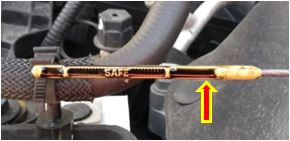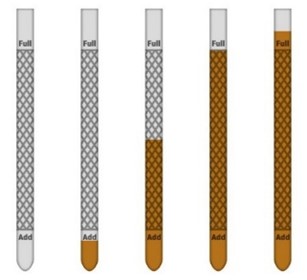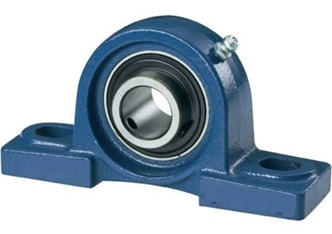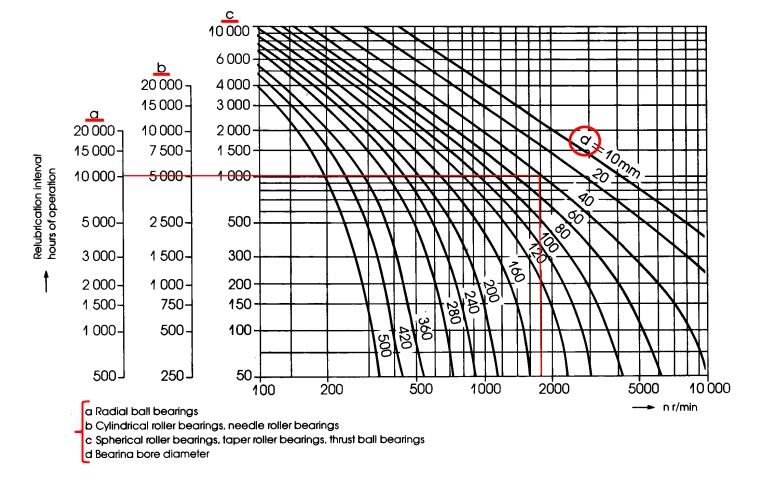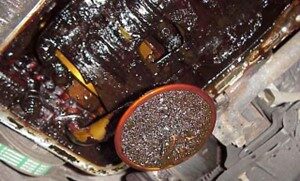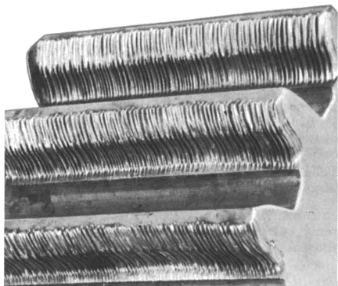
A simple visual inspection of gear wear patterns can aid in identifying latent problems and looming gear failures. Once the problem is identified, there are ways to avoid some of the common culprits, such as gearbox design and materials, operating conditions and loading, misalignment and insufficient lubrication. Any of these can have a major influence on performance and reliability but in this publication we will focus mainly on misalignment and lubrication related problems.
Misalignment of the gearbox shafts is a common reason for gearbox failures and is often the result of wrong installation and setup procedures. Even if the initial alignment is within acceptable tolerances, operating and environmental conditions can eventually cause the shafts to become misalignment, e.g. loads generated during operation and the transmission of power through the gearbox can result in shafts or other gearbox components deflecting. Temperature variations can also result in expansion or contraction of the shafts or gearbox components (especially the gearbox housing) which will consequently cause the shafts to become misaligned. It is therefore essential to start the inspection by checking the alignment of the shafts and gears inside the gearbox.
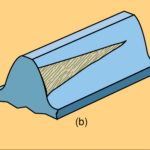
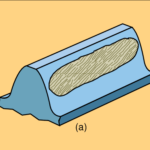
An even wear pattern along the tooth surface as shown on the left, indicates that the gears are aligned correctly. Misalignment is exhibited as abnormal wear at one end of the tooth as depicted on the right.
Gear tooth surface wear can be described as the removal or displacement of material due to mechanical, chemical or electrical action. In this publication discussions will be limited to the following mechanical wear modes which are lubrication related:
ABRASION
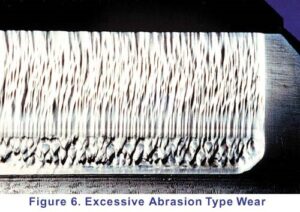 Abrasion can range from mild to severe. Very mild abrasion may cause polishing of gear teeth. Moderate abrasion consists of fine scratches with little removal of material from the contact surfaces. Severe abrasion manifests itself as deep grooves on gear teeth as shown on the right. Abrasive wear is brought about by particle contamination of the oil or rough gear surfaces as discussed below:
Abrasion can range from mild to severe. Very mild abrasion may cause polishing of gear teeth. Moderate abrasion consists of fine scratches with little removal of material from the contact surfaces. Severe abrasion manifests itself as deep grooves on gear teeth as shown on the right. Abrasive wear is brought about by particle contamination of the oil or rough gear surfaces as discussed below:
Three-Body Abrasion occurs when hard contaminants (dirt or wear debris) in the oil are trapped between two meshing gear teeth. When the size of the particles is greater than the fluid film thickness of the oil, scratching, scraping or ploughing can occur. This creates parallel scrape marks in the direction of motion (from the base of the gear tooth to the tip), like rough sanding. Mild abrasion by fine particles can cause polishing with a satiny or matt appearance. Three-body abrasion may be prevented with improved oil filtration, flushing and sealing out foreign particles.
Two-Body Abrasion happens when metal asperities (surface roughness, peaks) on one gear tooth cut directly into a meshing tooth. Contaminant particles are not directly involved in this instance. The contact occurs in the boundary lubrication regime (see OilChat 22) due to inadequate lubrication or excessive surface roughness which could have been caused by some other form of wear. Higher oil viscosity may help to reduce two-body abrasion.
PITTING (ALSO KNOWN AS SPALLING)
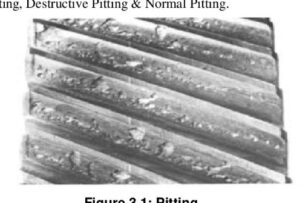 The formation of pits or holes on gear teeth is called pitting and is caused by overload conditions on the gear tooth surface. Severe pitting is also referred to as spalling. A pit forms when small cracks (due to overloading) grow long enough to separate a piece of material at the surface. These irregularities cause additional friction and result in a lot of heat being generated, which in turn reduces the viscosity of the oil. A possible solution would be to use an EP oil with higher viscosity.
The formation of pits or holes on gear teeth is called pitting and is caused by overload conditions on the gear tooth surface. Severe pitting is also referred to as spalling. A pit forms when small cracks (due to overloading) grow long enough to separate a piece of material at the surface. These irregularities cause additional friction and result in a lot of heat being generated, which in turn reduces the viscosity of the oil. A possible solution would be to use an EP oil with higher viscosity.
SCUFFING, SCORING OR GALLING
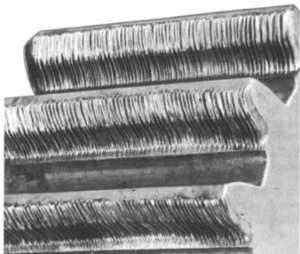 Scuffing or scoring can be described as grooves over a wide area of gear teeth. Scuffing leads to the much more serious wear mechanism referred to as galling as seen on the left. It occurs when a lack of lubrication causes metal-to-metal contact of gear teeth, resulting in elevated temperatures. This can result in localized welding in contact areas. Metal is then ripped from one surface and transferred to the other. This type of wear is also referred to as adhesive wear.
Scuffing or scoring can be described as grooves over a wide area of gear teeth. Scuffing leads to the much more serious wear mechanism referred to as galling as seen on the left. It occurs when a lack of lubrication causes metal-to-metal contact of gear teeth, resulting in elevated temperatures. This can result in localized welding in contact areas. Metal is then ripped from one surface and transferred to the other. This type of wear is also referred to as adhesive wear.
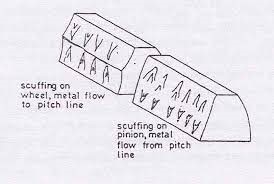 On driven gears metal ‘flows’ towards the middle of the gear teeth, along the length of gear teeth, as shown above and on the left gear tooth in the adjacent diagram. On driving gears metal propagates away from the centre line of the gear as depicted on the far right. Possible solutions would be to use an EP oil with a higher viscosity and reducing the temperature of the oil.
On driven gears metal ‘flows’ towards the middle of the gear teeth, along the length of gear teeth, as shown above and on the left gear tooth in the adjacent diagram. On driving gears metal propagates away from the centre line of the gear as depicted on the far right. Possible solutions would be to use an EP oil with a higher viscosity and reducing the temperature of the oil.
Gear wear pattern analysis can identify the root cause of many gear problems and with appropriate lubrication practises the wear modes discussed above may be avoided. Should you have any questions about gear lubrication or want to find out more about the extensive range of Q8Oils gear oils, please phone 011 462 1829, email us at info@bcl.co.za or visit www.bcl.q8oils.co.za


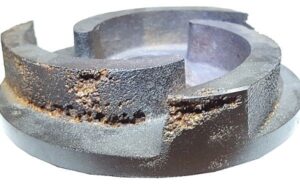


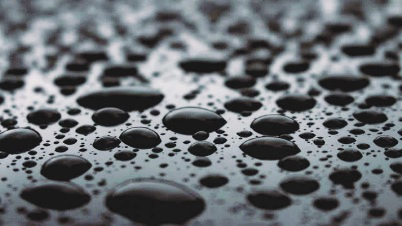

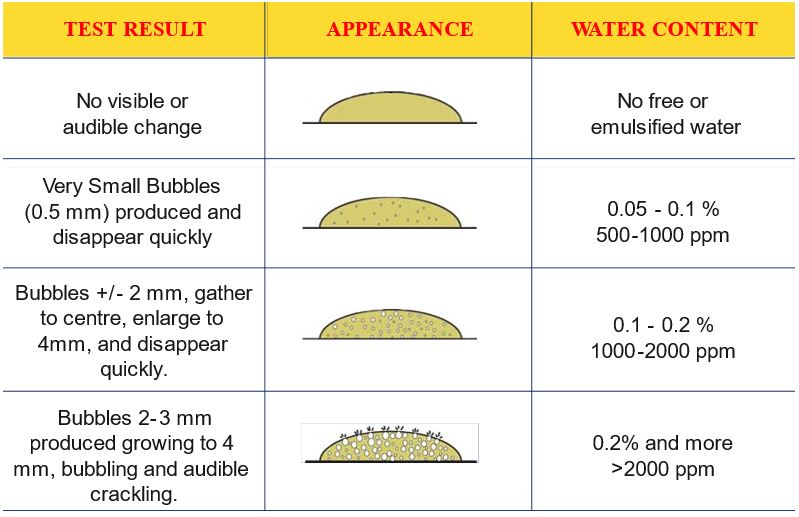
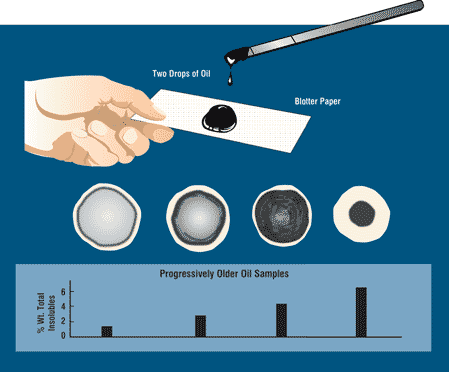

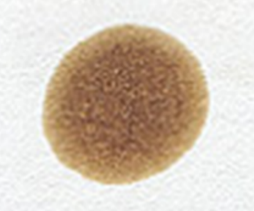
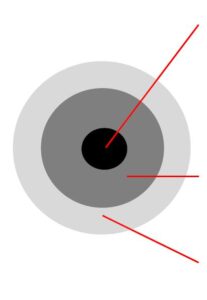
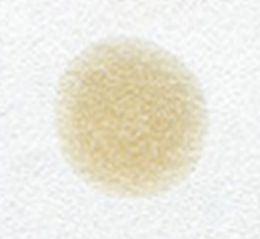
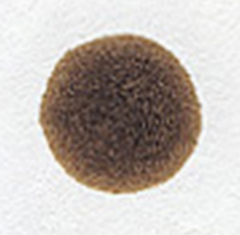

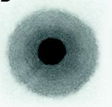


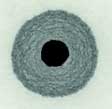

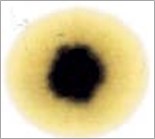 y the contaminant band should spread with the oil to leave a fairly even discoloration. When the oil is badly contaminated, the contaminants clump together and do not migrate with the oil front. This indicates that the dispersancy additive of the oil is depleted.
y the contaminant band should spread with the oil to leave a fairly even discoloration. When the oil is badly contaminated, the contaminants clump together and do not migrate with the oil front. This indicates that the dispersancy additive of the oil is depleted.